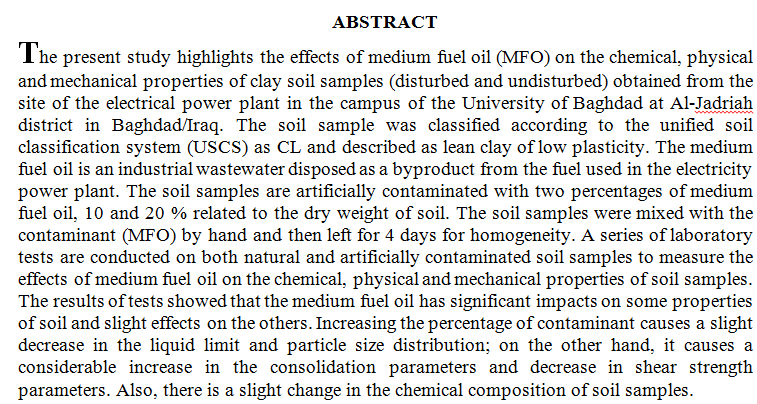
Reservoir rock typing integrates geological, petrophysical, seismic, and reservoir data to identify zones with similar storage and flow capacities. Therefore, three different methods to determine the type of reservoir rocks in the Mushrif Formation of the Amara oil field. The first method represents cluster analysis, a statistical method that classifies data points based on effective porosity, clay volume, and sonic transient time from well logs or core samples. The second method is the electrical rock type, which classifies reservoir rocks based on electrical resistivity. The permeability of rock types varies due to differences in pore geometry, mineral composition, and fluid saturation. Resistivity data are usually obtained from w
... Show More (1)
(1)
Water flooding is one of the most important methods used in enhanced production; it was a pioneer method in use, but the development of technology within the oil industry, takes this subject toward another form in the oil production and application in oil fields with all types of oils and oil reservoirs. Now days most of the injection wells directed from the vertical to re-entry of full horizontal wells in order to get full of horizontal wells advantages.
This paper describes the potential benefits for using of re-entry horizontal injection wells as well as combination of re –entry horizontal injection and production wells. Al Qurainat productive sector was selected for study, which is one of the four main productive sectors of Sout
 (56)
(56)
 (57)
(57)
 (2)
(2)
The aim of this study is to investigate the main causes of the family violence and its
social effects.
The study reveals that main factors causes of the violence are interaction between
multi-factors.
The study shows that the poverty, low educational level, house crowded, large family
size, all of these variables causes of the violence, and then causes of family disorganization
and juvenile delinquency.
The study contain of three sections:
First: Focused on the causes of the violence.
Second: The interaction between multi factors.
Third: Social effects of family violence.
In the geotechnical engineering applications, precise understandings are yet to be established on the effects of a foundation stiffness on its bearing capacity and settlement. The modern foundation construction uses the new available construction materials that totally change the relative stiffness of the footing structures-soil interactions such as waste material and landfill area of more residential purposes. Conventional bearing capacity equations were dealt with common rigid footing and thus cannot be used for reduced foundation rigidity. Therefore, this study investigates the effects of foundation relative stiffness on its load-displacement behaviour and the soil deformation field using compression test of a strip smooth footings on su
... Show More (3)
(3)
 (3)
(3)
 (13)
(13)
Horizontal wells have revolutionized hydrocarbon production by enhancing recovery efficiency and reducing environmental impact. This paper presents an enhanced Black Oil Model simulator, written in Visual Basic, for three-dimensional two-phase (oil and water) flow through porous media. Unlike most existing tools, this simulator is customized for horizontal well modeling and calibrated using extensive historical data from the South Rumaila Oilfield, Iraq. The simulator first achieves a strong match with historical pressure data (1954–2004) using vertical wells, with an average deviation of less than 5% from observed pressures, and is then applied to forecast the performance of hypothetical horizontal wells (2008–2011). The result
... Show More (2)
(2)
 (2)
(2)
In this work, measurements of activity concentration of naturally occurring radioactive materials (NORM) isotopes and their related hazard indices for several materials such as crude oil, sludge and water in Ahdeb oil fields in Waste governorate using high pure germanium coaxial detection technique. The average values for crude oil samples were174.72Bq/l, 43.46Bq/l, 355.07Bq/l, 264.21Bq/l, 122.52nGy/h, 0.7138, 1.1861, 0.601 mSv/y, 0.1503mSv/y and 1.8361 for Ra-226, Ac-228, K-40, Ra eq, D, H-external and H-internal respectively. According to the results; the ratio between 238U to 232Th was 4, which represents the natural ratio in the crust earth; therefore, one can be strongly suggested that the geo-stricture of the
... Show MoreThis research aims to investigate and evaluate a reactive powder concrete (RPC) cast using economical materials. Its mechanical properties were investigated and evaluated by studying the effects of using different cement and silica fume contents and locally steel fibers aspect ratios as reinforcement for this concrete. A compressive strength of about 155.2MPa, indirect tensile strength of 16.0MPa, modulus of elasticity of 48.7GPa, flexural strength of 43.5MPa, impact energy of 3294.4kN.m and abrasion loss 0.59% have been achieved for reinforced RPC contains 910 kg/m3 cement content, silica fume content 185 kg/m3 of cement weight and fiber volume fraction 2%. The water absorption values w
... Show More